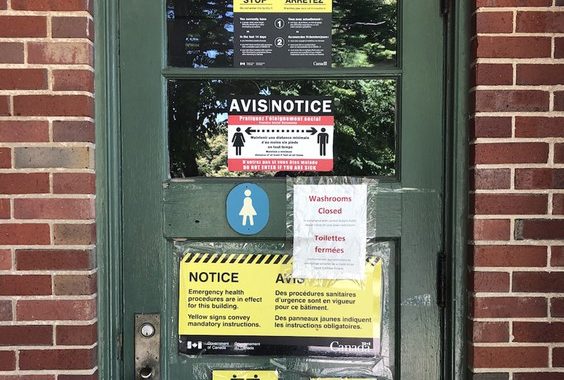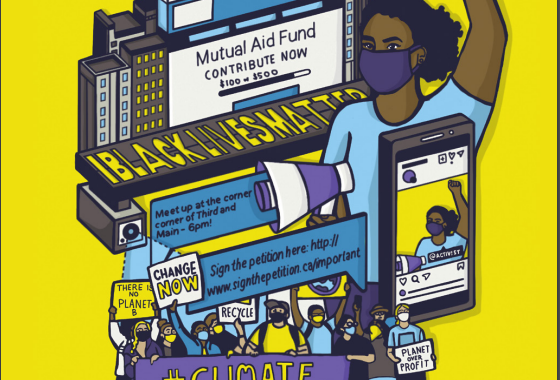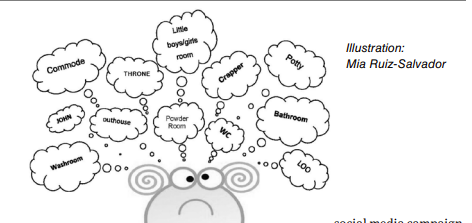How for-profit restrooms can solve the problem.
Foundation for Economic Foundation, Dec 28, 2020
Scott Beyer
he lack of public restrooms in U.S. cities has long been a problem – frankly, a bane of urban life. It’s particularly hard on pregnant women, delivery workers, homeless people, or, as I can attest having just moved to New York City, transit riders.
This shortage wasn’t always the case. City restrooms used to be safe, clean and widely-available in America, and still are across the world. But now they’re rare here, and expensive and difficult to run where they exist. The difference has been the altered incentive structure towards restroom provision – which caused scarcity.
As Aaron Gordon writes for Pacific Standard, publicly-available restrooms used to be common in the U.S. because they were for-pay. In the early 1900s, they popped up along railroads and then spread to the nation’s airports, bus stations, and highway rest stops. They were also common in busy urban commercial districts, often provided by the company Nik-O-Lok. By 1970, America had over 50,000 for-pay toilets.
Several separate interests began dismantling this business model in the 1970s. One was the feminist movement, which didn’t like that some companies charged for using commodes but not urinals (granted, commodes are more expensive to operate, making this policy about more than just gender).
Another was the American Restroom Association, a group that still exists to call for legislation that supposedly improves restroom design and availability. Third, was the Committee to End Pay Toilets in America (CEPTIA), a group of teenagers who got tired of paying to use restrooms. In 1970, they launched a grassroots crusade against for-pay toilets, under the rubric of human rights, even writing a school-spirit-style song:
We’ll work until we know
that toilets in America
Are free where-e’er we go
We’ll flush them out!
We’ll wipe them out!
We pledge, O CEPTIA!
This pressure was surprisingly effective, and states began passing legislation to ban for-pay restrooms. By 1980, almost none existed.
The expectation from CEPTIA and others was that this would cause a wave of city governments to fill the void by providing free public restrooms. That thinking turned out to be naive.
What happened instead was an extreme restroom shortage that continues today, causing real inconvenience in cities, and sometimes public health problems, with well-publicized stories of street defecation in cities like San Francisco and Los Angeles.
One reason is that public entities don’t have money to maintain restrooms since there is no user fee for it. Safety, and the high cost of ensuring it, is another commonly-cited problem. So public restrooms largely don’t exist, with transit stations being one noted example. Some major U.S. transit agencies have bathrooms in their subway stations, but they are either closed, tough to find, or unusable.
The New York MTA, according to a 2019 New York Times report, had operative restrooms in only 51 of 472 stations. Bathrooms are also scarce for the systems in Chicago, DC and San Francisco.
When cities try providing restrooms, it’s often disastrous – another casualty of the waste endemic in municipal governance and public-private outsourcing.
Take San Francisco, the infamous city of street pooping. It cost the public works department $2 million to build bathroom kiosks, due to the city’s onerous labor rules. It bid the kiosks to a French contractor, who collected kiosk ad revenue in exchange for managing them. The company garnered $118 million in revenue over two decades but neglected to adequately oversee the kiosks, which became drug and prostitution hubs.
The answer is for state and city governments to begin repealing their laws and letting the market provide publicly-available restrooms again. This happens worldwide.
For-pay toilets are common across Europe, generally available for under $1 USD. In Latin America, stand-alone facilities are managed by attendants who collect tips. Other times, retailers will sell the use of their restrooms – in Mexico City, I found clothing stores that offered theirs for $0.25 USD. It was thus easy to find one, even in dense areas like Centro.
The odd thing is that skeptics would call this common international practice “inhumane.” But as the U.S. shows, outlawing the profit motive for restroom provision just means there are fewer restrooms. That sounds even less humane.
This article was reprinted with permission from the Independent Institute.



